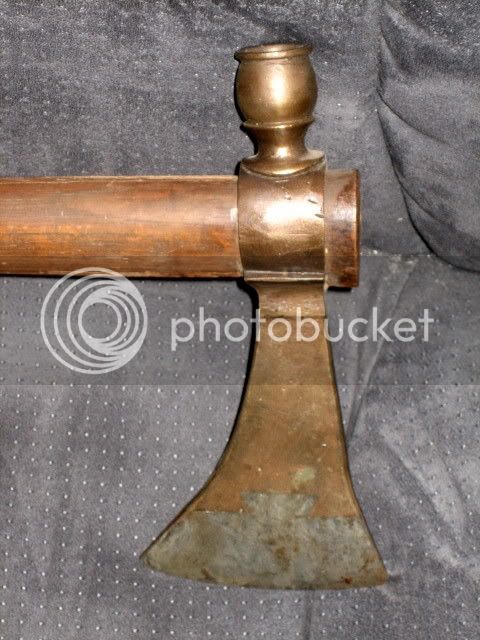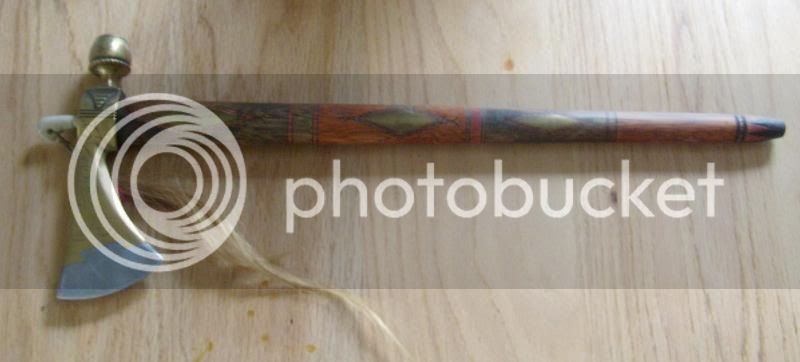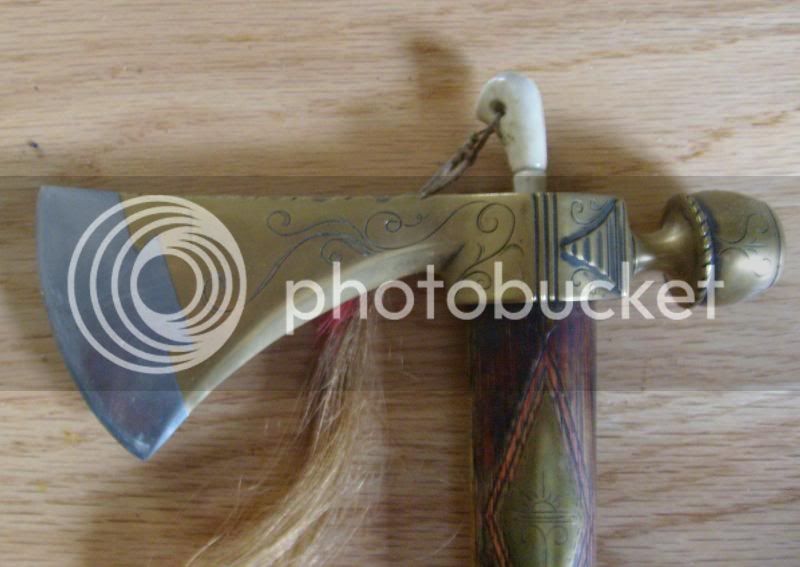Wondering if any of you fellers ever tried making one and if so how did you harden and solder the bit in or did you just forget about hardening and temper of the bit ? did you use reg solder or silver solder/braze ? Some want functional not just to hang on the wall any ideas ? thanks Joe
-
This community needs YOUR help today. We rely 100% on Supporting Memberships to fund our efforts. With the ever increasing fees of everything, we need help. We need more Supporting Members, today. Please invest back into this community. I will ship a few decals too in addition to all the account perks you get.

Sign up here: https://www.muzzleloadingforum.com/account/upgrades -
Friends, our 2nd Amendment rights are always under attack and the NRA has been a constant for decades in helping fight that fight.
We have partnered with the NRA to offer you a discount on membership and Muzzleloading Forum gets a small percentage too of each membership, so you are supporting both the NRA and us.
Use this link to sign up please; https://membership.nra.org/recruiters/join/XR045103
You are using an out of date browser. It may not display this or other websites correctly.
You should upgrade or use an alternative browser.
You should upgrade or use an alternative browser.
brass headed tomhawk w/steel bit ?
- Thread starter fatboy
- Start date

Help Support Muzzleloading Forum:
This site may earn a commission from merchant affiliate
links, including eBay, Amazon, and others.
paulvallandigham
Passed On
- Joined
- Jan 9, 2006
- Messages
- 17,538
- Reaction score
- 80
The Steel insert edge has to be hardened and tempered separately from the brass. Brazing is normally what is called for when you want a strong bond between brass and steel.
Brazing has a color that is similar to brass, when cooled, so that the joint becomes less obvious. Silver solder comes out - Silver!-- and contrasts with the brass and the steel much more.
Brazing has a color that is similar to brass, when cooled, so that the joint becomes less obvious. Silver solder comes out - Silver!-- and contrasts with the brass and the steel much more.
So if I harden the bit and temper then want to braze it in place I need to attach a heat sink to the bit? Or after hardening and brazing remove the heat sink and more then likely I would have a enough heat from the brazing process to finish the temper ? If I can move quickly enough and the heat was not to great
paulvallandigham
Passed On
- Joined
- Jan 9, 2006
- Messages
- 17,538
- Reaction score
- 80
You are going to probably use heavy C-clamps, or vise grips, or a bench vise to hold onto the cutting edge piece of steel while you join it to the Brass axe head by brazing. That will serve as your heat sink, keeping the bit from annealing( softening, or losing its temper). Brazing normally does not require the same amount of heat needed to anneal steel, so I frankly don't think you have much to worry about. Remember that the Brass hawk head will also be drawing a lot of the heat being applied to braze the joint. Because of the copper in brass, it will draw heat faster than will the steel.
Most of these Bi-metal tomahawks are art works, and not intended for actual use. The Brass is Not going to stand much pounding, so cutting wood with the hawk is out of the question. I suppose it could be used in warfare to kill an attacker, but for not much else. I would much rather use a full steel hawk for a weapon, than a bi-metal one.
Most of these Bi-metal tomahawks are art works, and not intended for actual use. The Brass is Not going to stand much pounding, so cutting wood with the hawk is out of the question. I suppose it could be used in warfare to kill an attacker, but for not much else. I would much rather use a full steel hawk for a weapon, than a bi-metal one.
- Joined
- Aug 25, 2003
- Messages
- 6,387
- Reaction score
- 1,254
Don't even try to braze it. It takes a lot of skill to braze brass to brass, and a common brazing rod is brass. You need to talk to someone who has done this. Don't be afraid to call on an artisan who has done it. Most will tell you how. I don't have a good answer unless you have no intention of chopping with it. If only as a showpiece, just fit the steel with a tight dovetail, then hammer the brass to get a perfect fit, and don't chop with it. Other than that, Brownells Silvaloy will secure it without melting the brass. There is a silver braze that is brass colored. If you wish, I can find out where to get it. I think I have it noted somewhere, but at the moment, I don't know where.
yea the hi temps can be a issue I have used this to put a brass guard on a knife wrapped blade in a wet shop rag to help comtrol heat on the blade dont think that guard is ever coming off this is what I used >Safety-Silv 45T
Performs like a 45% silver, cadmium-bearing alloy, but is cadmium-free. Lower melting temperature that Safety-Silv® 45. Excellent fillet-forming qualities Produces high-strength, ductile joints. NSF Certified to NSF 51.
>Harris Safety-Silv 45
Excellent general-purpose brazing alloy. Often specified in government use. Good ductilitiy and capillary flow. Color is silver to light yellow.
Performs like a 45% silver, cadmium-bearing alloy, but is cadmium-free. Lower melting temperature that Safety-Silv® 45. Excellent fillet-forming qualities Produces high-strength, ductile joints. NSF Certified to NSF 51.
>Harris Safety-Silv 45
Excellent general-purpose brazing alloy. Often specified in government use. Good ductilitiy and capillary flow. Color is silver to light yellow.
LHunter, I have done this using piece of lawn mower blade filed to a dovetail and fit into a mating dovetail on a brass head, I bought from R. E. Davis. The dove tail was a very good fit, I used silver solder that I bought at a local weld shop.It is a little more silvery color than the brass, but you would need a 10x loop to see it, if at all. I don't have a picture to show you, maybe the fellow that has it will post one. I have done some brazing, but never with brass, it is so close in melting temperatures that it would be very difficult. Hope this helps, good luck.
Robby
Robby
As far as I know, there is only the dovetail om my brass/steel bitted 'hawk.Robby said:LHunter, I have done this using piece of lawn mower blade filed to a dovetail and fit into a mating dovetail on a brass head, I bought from R. E. Davis. The dove tail was a very good fit, I used silver solder that I bought at a local weld shop.It is a little more silvery color than the brass, but you would need a 10x loop to see it, if at all. I don't have a picture to show you, maybe the fellow that has it will post one. I have done some brazing, but never with brass, it is so close in melting temperatures that it would be very difficult. Hope this helps, good luck.
Robby

Mazo, By that, do you mean that it is held in by friction fit only? I would doubt that. More likely it is a very good fit and solder job. Just my opinion.
Robby
Robby
A little information about brazing. Any brazing rod available at your welding supply will be bronze, not brass, but it will be a perfect color match for common brass. It is much stronger than brass and is close to mild steel in strength. Brazing requires red heat so any small piece of steel will be annealed after brazing. If you attempt to heat treat it after brazing it will just destroy the brazed joint. The quality of a brazed joint in brass will depend on the amount of lead in the brass alloy. The higher the lead content which can be up to 10%, the more porosity will form in the joint.
I've done several. Here's a few. As Wick has already suggested, brazing brass to steel with brass rod is something very few can do. Most/Some originals had the brass poured around the steel bits. Also pretty tough for the average guys to do.
I fitted the steel bit into the dovetail, tinned both parts and then soldered the pieces together. Plenty strong unless you start wacking stuff. R.E.Davis sells an insert along with the brass head. I did cut the size of the dovetail down. The only issue you will run into is the brass heads seem to have a high bronze content and tend to be a little brittle when engraving.
These hawks are show pieces for the most part. Presentation pieces given to the Native American tribes that helped the British.
 [/img]
[/img]
 [/img]
[/img]
 [/img]
[/img]
I fitted the steel bit into the dovetail, tinned both parts and then soldered the pieces together. Plenty strong unless you start wacking stuff. R.E.Davis sells an insert along with the brass head. I did cut the size of the dovetail down. The only issue you will run into is the brass heads seem to have a high bronze content and tend to be a little brittle when engraving.
These hawks are show pieces for the most part. Presentation pieces given to the Native American tribes that helped the British.



- Joined
- Aug 25, 2003
- Messages
- 6,387
- Reaction score
- 1,254
Beautiful work Packdog.
Similar threads
- Replies
- 23
- Views
- 1K
- Replies
- 24
- Views
- 3K






